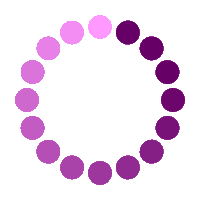- Goldwell
- Utdannelse
- Hair Science
- Color Theory
- Color & Shine
COLOR & SHINE

LIGHT REFRACTION
Light contains rays known as wave lengths that are visible only through a prism. A prism distributes white light into the colors of red, orange, yellow, green, blue and violet.

LIGHT REFLECTION
When light hits a surface it is either reflected or absorbed depending on the color. White surfaces reflect the entire spectrum of colored light while black surfaces reflect nothing, and instead absorb light.
Light is partially reflected and partially absorbed when it falls on a colored object. This unabsorbed or reflected light is perceived by the eye and brain as the color of the object.

SHINE
Shine is the brightness, or brilliance, reflected off of a surface. The smoother and more even the surface, the more intense the shine. Example: An old car with faded paint is dull while a car with new paint shines.
A smooth surface can also reflect light directionally whereas a rough surface deflects it.
BY THE WAY
Hair can have both surface light reflection as well as inner light reflection. We’ll discuss in greater detail in the chapter about Perception of Hair Color.
COLOR WHEEL

COLOR WHEEL
PRIMARY COLORS
The color wheel is the centre of the color sphere. It is the principle on which all color theory is based and includes primary, secondary and tertiary colors.
Primary colors are the fundamental or basic colors that can’t be produced by mixing: yellow, red and blue (also known as Cyan-Blue, Yellow and Magenta-Red). These colors can be mixed to produce every other color found in nature, or secondary colors.

COLOR WHEEL
PRIMARY AND SECONDARY COLORS
Secondary colors can be found in-between primary colors on the color wheel and are made by mixing two primary colors in equal proportions.
Secondary colors are orange, violet and green.

COLOR WHEEL
PRIMARY, SECONDARY AND TERTIARY COLORS
Tertiary colors are created by combining equal portions of a primary color with its neighbouring secondary color.
Tertiary colors are red-orange, yellow-green, blue-green, blueviolet, red-violet.
Colors that are opposite of each other on the wheel are called complementary colors.
When mixing opposite or complementary colors, keep in mind that they neutralize each other, meaning that the color will be toned down to a neutral brown.
Get more information about the Goldwell color circles here.
COLOR SPHERE

BISECTED COLOR SPHERE
The color wheel is a part of the color sphere

COLOR SPHERE WITH DARK AND LIGHT POLE
In addition to mixing primary and secondary colors, the color sphere also shows dark colors. All colors and all graduations between black and white can be found on the surface as well as inside the sphere. This is what allows us to clarify the relationships between colors.
BY THE WAY
Color Theory with the Color Sphere is based on a theory first advanced by Johann Wolfgang von Goethe in 1810.
Learn more about Color Theory here.
- Goldwell
- Utdannelse
- Hair Science
- Color Theory
- Color & Shine


